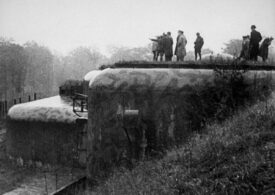 The United States, like most democracies, takes pride in being governed by the “rule of law”; it aspires to be what John Adams once called “a government of laws and not of men.” There’s a sense, in this imagery, that law is something distinct from human beings; that it’s a sort of machine, that operates autonomously to generate answers to legal questions.
The United States, like most democracies, takes pride in being governed by the “rule of law”; it aspires to be what John Adams once called “a government of laws and not of men.” There’s a sense, in this imagery, that law is something distinct from human beings; that it’s a sort of machine, that operates autonomously to generate answers to legal questions.
Of course, as the legal realists recognized, that’s all transcendental nonsense. Laws do not apply themselves, they are written and interpreted and applied by human beings. But a rule of laws that is subject to the whims of individual decisionmakers is no rule at all. Believing in the rule of law requires a sort of leap of faith. It requires a form of trust that other actors in the system, even ordinary citizens, will generally coalesce around the same outcomes and interpretations.
And that sort of trust — any sort of trust in institutions, including law — is breaking down. Faith in courts to provide the law, and faith in lawyers to be able to say what the law is, will fade with it. And after that, in the words of Felix Frankfurter: “first chaos, then tyranny.”
The operation of the legal system taught in law school, and depicted on television, doesn’t require much trust or faith at all. People have disputes, or are charged with crimes. The disputants go to court, and the court provides the answer. And then that answer somehow governs everyone and tells them what to do. The end.
But this view of the law as the output of the formal institutions of legal decision-making — not only courts, but administrative agencies and prosecutors’ offices — leaves out a large portion of the story. How do people actually know what the law is? And why do they follow it?
The answer is mostly outside of the formal institutions and sources of law. Indeed, for the law to work effectively, a lot of people have to daily not invoke formal legal processes, or even consult lawyers. They have to trust that the information about the law they’ve received from schools, and from news media, and from government agencies, and from friends is accurate. And when they do consult lawyers, they have to trust that those lawyers can provide them with answers that others will respect.
That in turn requires lawyers to have faith. They have to trust that they share with other lawyers and judges and regulators a roughly similar set of intuitions that comprise part of their professional identity: shared intuitions about how to determine the answers to legal questions, such as what sorts of situations are unusual, what sorts of reasons are persuasive, what sorts of inferences are permissible. That professional identity is the one that we start inculcating in law school; it’s part of “how to think like a lawyer.”
Legal professionals inhabit a sort of imagined community with other lawyers, that allows them to use common methods to analyze legal issues and predict how they will be analyzed by others. And, while obviously not immune from political ideology, that shared professional identity is what gives shape to a common notion of what the “law” is and what it allows. It is what held the line against attempts to override the presidential election results in court challenges in several states, including Pennsylvania, Michigan, and Wisconsin.
But there are signs that, just as with other communities and institutions, the professional identity of lawyers is fracturing. Obviously the U.S. Supreme Court has been hotly contested for some time. But many other courts show signs of fracture, not only with respect to the outcome of controversial cases, but in their basic understandings of the world around them.
Neal Devins and Allison Orr Larsen have discovered evidence that, before 2018, federal appellate courts rarely used en banc review as a partisan weapon, e.g. by overriding panels dominated by minority-party members. After 2018, however, their data showed “a dramatic … surge in behavior consistent with the weaponizing of en banc review.” In other words, it appears professional norms among judges are now weakening in favor of partisan ones.
And, worse than that, some of the recent COVID cases have shown judges inhabiting different epistemic universes. The Fifth Circuit in BST Holdings v. OSHA went out of its way in November to issue an opinion in the OSHA vaccine mandate case that cast doubt on the “supposedly ‘grave danger'” that the COVID-19 pandemic poses, or indeed whether it poses “any significant danger” at all. In the universe in which COVID-19 is not a serious problem, it seems more reasonable to question whether the federal government has any constitutional power to do anything about pandemics, which the panel also did.
If lawyers and judges divide on what sorts of arguments are convincing, and what sorts of facts are plausible, then the next time election results are challenged, the result will be more Maginot Line than Bastogne.
